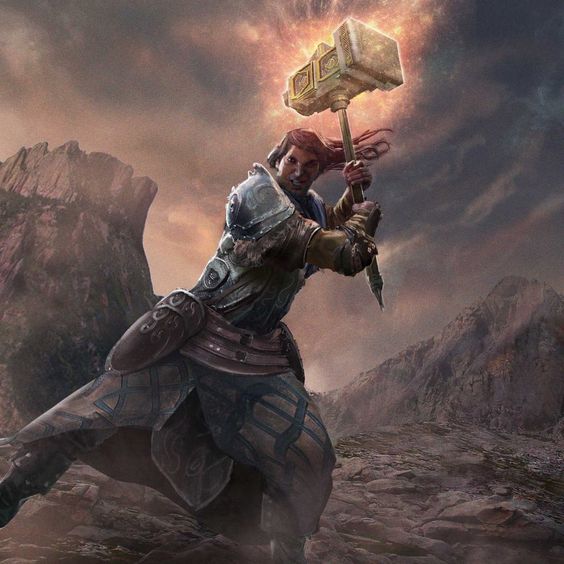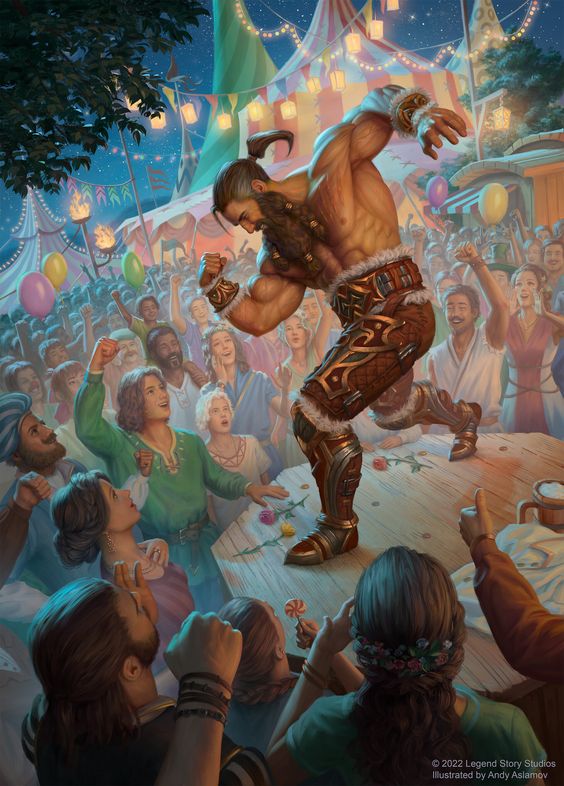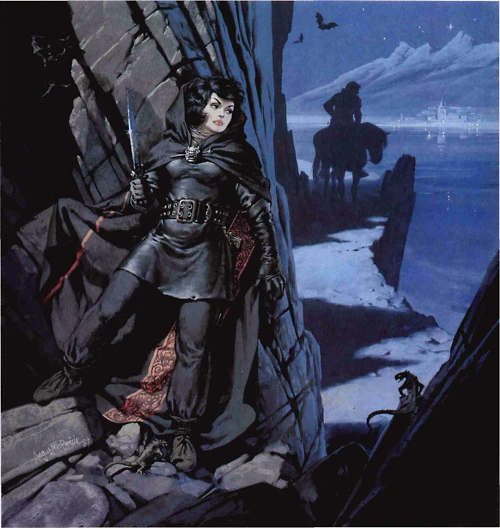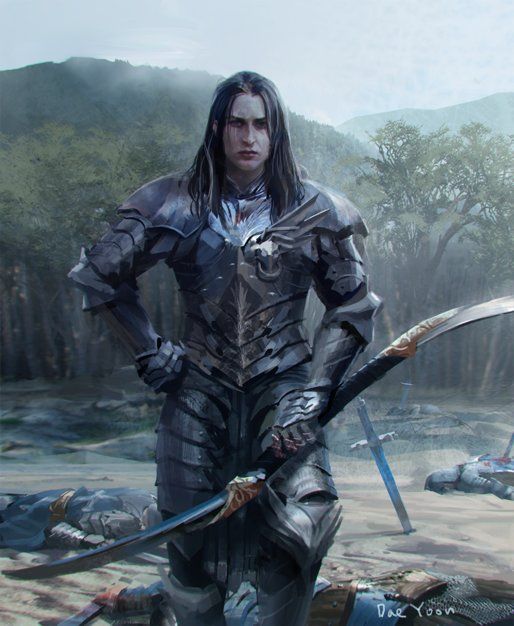D&D 5e: Crush Your Enemies And See Them Driven Before You With The Crusher Feat

D&D 5e: Crush Your Enemies And See Them Driven Before You With The Crusher Feat
SOURCE: Tasha’s Cauldron of Everything
Rating the Benefits of the Crusher Feat
Benefit #1 –
Increase Strength or Constitution score by 1, to a max of 20
Half an ASI. A boost to stats is good, and this also means the remaining benefits of Crusher are considered equivalent to half a feat
Benefit #2 –
Once per turn, when hitting an enemy with an attack that deals bludgeoning damage, you can move that enemy 5ft, as long as they’re not more than one size larger than you
Automatic movement is a powerful effect, especially one that triggers on hit and requires no resources. This can and probably will be used once per turn, every single turn.
Benefit #3 –
After hitting an enemy with a critical hit that dealt bludgeoning damage, until the start of your next turn, any further attack rolls against the targeted enemy are made with Advantage
Landing a critical hit is always good. That critical hit also providing Advantage on attack rolls to the rest of the party is an exceptionally powerful effect

Mechanics and Requirements
Understanding How It Functions
Half an Ability Score Increase
Many feats offer half an ASI as part of their perk list. The Crusher feat allows a choice of +1 to Strength or Constitution, which is a good general spread that’s useful for evening out odd scores or taking two feats that provide bonuses to a statistic. Melee brawlers will appreciate more Str, and any character can always use more Con.
As we’ve already mentioned, the fact that Crusher boosts stats also means that the rest of the abilities on offer are considered the equivalent of half a feat.
Forced enemy movement on hit
Positioning is one of the largest considerations in effect combat during encounters in D&D 5e. The party and the enemies that they’re fighting will both have preferred targets and facing off against the wrong foe can drastically drop someone’s combat effectiveness.
While 5ft of movement doesn’t feel like a lot, it’s enough to, for example, knock back an enemy away from the vulnerable, low AC party caster. Or drive a hole in the enemy defensive formation for the Barbarian to charge through.
Better is the fact that this ability requires no dice roll. If the enemy is large or smaller, and you hit them with an attack, they get moved. There’s literally no way to prevent the effect.
So, to reiterate, the movement from Crusher requires no resources, can be used every turn, and just works. Overall, this is a powerful effect to have on-hand and available pretty much all the time.
Party attack roll Advantage on critical hits
The second benefit of the Crusher feat automatically activates whenever you make a critical strike with a weapon that deals bludgeoning damage.
From that moment until the start of your next turn, all attacks made against that target are made with Advantage. This has two major benefits:
Firstly, the rest of the party gains major benefits from this. Any attacks made from your turn, until your next turn, all gain Advantage. In a standard party of 4, that’s 3 other party members gaining Advantage for free.
Secondly, any further attacks you make during this turn are also made with Advantage. Your first attack critting makes the rest much easier to land, massively increasing damage that round.
Which weapons qualify for the Crusher feat?
Simple Weapons
- Club – One-handed. 1d4 damage
- Greatclub – Two-handed. 2d8 damage
- Light Hammer – Light. Thrown. 1d4 damage
- Mace – 1d6 damage
- Quarterstaff – 1d6 damage. Versatile 1d8
- Sling – Ranged 30/120. 1d4 damage
Martial Weapons
- Flail – 1d8 damage
- Maul – Heavy. Two-handed. 2d6 damage
- Warhammer – 1d8 damage. Versatile 1d10
Misc weapons
- Unarmed attacks
- Many kinds of natural attack
- Improved weapons, for example, a chair leg might be considered a club
Key Stats
The Crusher feat offers a half ASI, giving a +1 boost to either Strength or Constitution.
Furthermore, every weapon currently published that deals bludgeoning damage use Strength for its attack and damage rolls, meaning that leaning towards high Strength is a safe bet when taking this feat.
Ideal Characters for Crusher
Top Classes
Fighter – Fighters love weapon feats, and Crusher is no exception. The class makes perfect use of the stat boosts and loves being at the front of the fight, where the ability to shift enemy positions is most valuable. This is especially useful for Rune Knights, who can increase their own size to move even larger enemies around.
Finally, no one attacks or crits as often as the Fighter, meaning they’re uniquely positioned to use the last benefit and push Advantage out to the party with far more regularity.
Moon Druid – Many Wild Shape forms, such as the Giant Octopus, Giant Constrictor Snake, and Giant Crocodile, deal bludgeoning damage with their (giant) attacks. Many also add grapple or knockdown effects to these attacks. An enemy grappled and isolated by a giant constrictor every turn is pretty much dead and gone.
Barbarian – The Barbarian is a class that thrives on boosts to DPS. Being able to trigger Advantage at will pushes the chance to crit per attack up to 10%, and the weapons that trigger this feat are all ones the Barbarian loves. If you’ve got space in your build for it, Crusher is a great pick.
Paladin – Both standard Paladin builds; the two-handed damage dealer and the sword-and-board defender can use any weapon that works with the Crusher feat.
Oaths of Conquest in particular really appreciate the movement effect of Crusher, considering how it pairs with all of the fear effects they should be pumping out.
Monk – Monk unarmed attacks deal bludgeoning damage, and Flurry of Blows throws out a lot of rolls to trigger the Advantage on crit effect. Both are significant effects, letting a monk isolate then pummel their foes or strike and slip away. Strength is less useful than Dex, but many monks, as frontline fighters, will appreciate a bonus to Constitution instead.
Race or Subrace Choices
Bugbear – Choosing Bugbear for any melee striker build is generally a good shout as the race comes with a wide list of useful benefits. The most pertinent for us, though, is Long Limbed, increasing our melee weapon range by 5ft. No bludgeoning weapon has innate reach. This trait allows us to slap enemies around and force movement from greater distances than other races and classes ever could.
Elf/Half-Elf/Kobold – If you’re taking Booming Blade as a spellcaster who otherwise doesn’t have access to the cantrip, these races can all choose a free cantrip from suitable spell lists at character generation.
Combos, Tactics, and Synergies
Complementary Feats
Great Weapon Master – The Maul is a heavy, two-handed bludgeoning weapon tied for the highest weapon damage dice in the game: 2d6.
This feat pours on more damage and stacks on another critical effect; a bonus action attack, which, if it’s made against the poor soul you just crit, is now made with Advantage. Barbarians, Paladins, and other characters who really want to kill their enemies dead adore this feat combo.
Polearm Master – Polarm Master’s effects work with a Quarterstaff, which is currently the only bludgeoning weapon that qualifies. Still, a bonus action attack, plus provoking an attack of opportunity when something moves within 5ft of you is a solid list of bonuses, even if you don’t have reach. (Though you can use the staff one-handed and hold a shield for an AC boost.)
Amusingly, the forced 5ft movement from the Crusher feat triggers per creature turn, meaning an enemy moving within range and triggering your AOO can be bonked backward 5ft again on their turn, potentially finding themselves out of range to attack you again with clever positioning.
Tavern Brawler – For the old-fashioned gentleman pugilists among us, Tavern Brawler boosts unarmed damage (which is typed as bludgeoning) then lets characters bonus action grapple when they strike their foe with the ol’ one-two punch. Pushing an enemy away from the party then grappling them in place and preventing any movement lets a character utterly control the flow of an encounter. It’s also very very fun.
Spells that Synergize
Booming Blade – Crusher pushes your enemy back when you hit them. Booming Blade deals bonus damage if the target moves after you hit them. Push an enemy to a position it can’t hurt anyone, leaving them with the choice of doing nothing or taking extra damage on their turn.
Haste – More attacks mean more chances to proc. the effects of the feat. Haste is an all-around great spell for characters who spend their time attacking anyway. Having Crusher as part of your build only improves it.
Fear – Any spell that makes a creature Frightened is powerful when paired with Crusher because a Frightened creature cannot willingly move closer to the source of its fear. So you push them back, and they can no longer move toward your party. Melee enemies can be completely shut out using this single combo.
Strategies for Maximizing Effectiveness
Engage/Disengage
In 5e, as in reality, positioning can decide entire combats. An enemy managing to slip past the tank and DPS characters to start mauling the squishy casters and support characters often spells doom, and having to waste actions to Disengage safety burns entire character turns.
Enter Crusher, with its ability to automatically shove an enemy 5ft, letting you push an enemy out of reach of your ally, then step right into the breach so they can safely act when their turn comes around.
Hazards and AOE
The Wizard opens their spellbook and drops a Web, or a Wall of Fire, severely limiting the actions of your enemy. One breaks through, pushing out of the hostile location. So what do you do? You push them back in, of course!
Many hostile effects trigger when a creature first moves into an affected square. This means it also triggers when you push the target with Crusher’s free movement. Casters like Wizards and Druids have spell lists packed with these sorts of effects, so make sure to discuss possible tactics and combos with your party.
Crushing Spellpower
The Order of Scribes Wizard School from Tasha’s Cauldron of Everything gains an ability at level 2 that allows them to change the damage type of a spell to the damage type of another spell in their spellbook.
Plenty of spells make attack rolls, and plenty of other spells deal bludgeoning damage. Everything in the Crusher feat says it triggers on “an attack,” so this technically works. Is this janky monstrosity a good build? No. But is it a funny interaction we’d love to see on our tables? Absolutely.
Crushing your foes at a distance
Hilariously, slings deal bludgeoning damage, and nothing prevents the effects of the Crusher feat from triggering at range.
A sling costs basically nothing, (1 silver piece…) and you can arm yourself with any smooth stone. There’s no reason a character who picks up this feat shouldn’t also have a sling and bag of pebbles or lead shot on hand at all times.
Weird Interactions
- RAW, forced movement to push a mounted target out of the square of their mount instantly dismounts them
- Pushing two grappled targets apart automatically breaks the grapple. Works on you and your friends
- The Dao Genie Warlock deals bludgeoning damage when they cast spells. This combo’s with the Repelling Blast Eldritch Invocation for 15ft of knockback whenever you hit with Eldritch Blast
- Unarmed strikes deal bludgeoning damage as standard. Yes, an 8 Str Gnome Wizard’s measly 1 damage punch now auto-knockbacks 5ft if they take the Crusher feat
Final Thoughts on Crusher
Crusher isn’t the best combat feat, because it does nothing to increase a character’s actual damage. This means for purely optimized play Crusher generally loses out to Great Weapon Master, Polearm Master, Sentinel, and other top-tier options.
But that doesn’t mean the feat is bad. Far from it. Between the forced movement, the critical Advantage, and the stat boosts, there’s a lot of utility contained in one feat. The effects it brings are going to be used often, and felt by most of the table.
That’s the biggest takeaway. Crusher feels impactful. Every time you move an enemy away from your allies, every time you roll that 20 and the table erupts in excitement, you’ll be glad you took it. Especially compared to its contemporaries, Slasher and Piercer, Crusher is a feat that’s solid and well-designed, and we’d definitely recommend building a character around it if you’ve yet to do so.








